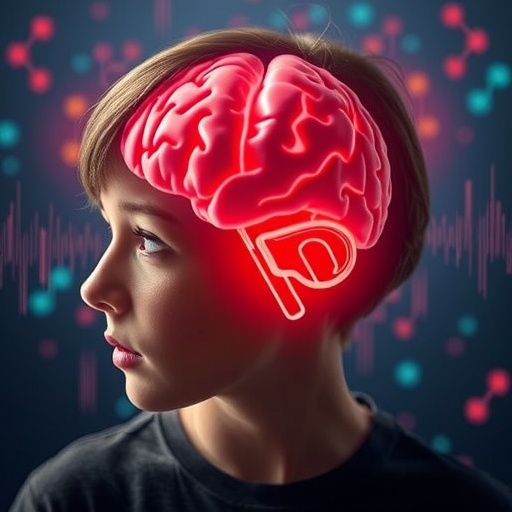In a groundbreaking study emerging from the Hebrew University of Jerusalem, neuroscientists have uncovered a remarkable mechanism by which the brain’s auditory cortex adapts during active engagement in complex tasks. Traditionally, the auditory cortex—long understood as a region primarily responsive to sound stimuli—has been observed chiefly through the lens of passive hearing. However, this research flips that perspective, revealing that during task participation, the auditory cortex exhibits intense neural activity patterns that are not directly elicited by sounds themselves. Instead, these ‘ticks’ are intricately synchronized with various phases of task execution, with individual neurons firing in specific temporal sequences, essentially serving as an internal clock governing behavior.
Led by Professor Israel Nelken of the Edmond and Lily Safra Center for Brain Sciences and the Institute of Life Sciences, the research represents the culmination of detailed experimental and computational modeling work, anchored on the doctoral research of Ana Polterovich. Accompanied by key contributions from a team comprising Alex Kazakov, Maciej M. Jankowski, and Johannes Niediek, this study provides a full-fledged mechanistic account of how auditory cortical activity recalibrates itself in real time to align with behavioral demands.
One of the study’s core revelations is that the auditory cortex does not merely amplify all incoming sound signals uniformly when attention is heightened. Instead, it selectively enhances responses to task-relevant sounds through a sophisticated interplay between spontaneous timing-related neuronal bursts and externally driven sound processing. This selective tuning optimizes the brain’s representation of auditory stimuli essential to successfully completing a task, thereby improving perceptual efficiency without flooding the auditory cortex with irrelevant sensory noise.
The authors employed advanced computational simulations to model the physiological observations, demonstrating that the timing of task-related neural activity transiently suppresses certain synaptic connections within the auditory cortex network. This damping effect effectively filters out less relevant sensory input, enabling more salient and informative patterns to emerge in response to critical sounds. These findings mark a paradigm shift in understanding attention not simply as an intensity booster but as a dynamic neural filter that restructures interneuronal communication pathways to heighten sensory precision.
This adaptive framework of auditory processing stands in contrast to the long-held view of attentional mechanisms acting like a ‘volume control’ that amplifies all perceived stimuli equally. Instead, attention is shown here to act more like an intelligent signal processor, reshaping the internal neural landscape to prioritize behavioral relevance. Such refinement ensures that the brain’s auditory system supports goal-directed activity with tailored neural representations rather than generic responsiveness.
Importantly, this research also clarifies how the brain manages the overwhelming flood of environmental sounds encountered in everyday life. By using internal timing codes linked to task dynamics, the auditory cortex can dynamically adjust neural gain and connectivity on the fly, essentially ‘preparing’ itself for expected sensory input tied closely to ongoing behavior. This temporal gating ensures that resources are allocated efficiently, minimizing sensory distractions and maximizing response accuracy.
The implications of these findings extend beyond auditory neuroscience. They shed light on the general principles governing cortical processing and cognitive engagement across sensory modalities. The auditory cortex’s interaction with task-specific timing networks showcases a sophisticated integration of sensory and motor domains, underscoring how the brain’s dynamic internal states orchestrate perceptual experience and behavior.
Beyond the immediate sphere of auditory perception, this study challenges classical neurophysiological models that segregate ‘bottom-up’ sensory processing from ‘top-down’ behavioral modulation. It instead supports a bidirectional, recursive model where sensory cortical areas actively shape and are shaped by task-related signals. This bidirectional influence fosters a fluid neural environment where perception and action continually co-evolve.
Professor Nelken emphasizes that these insights revolutionize our understanding of cognitive focus and sensory filtering. “Our findings demonstrate that the brain’s auditory circuits are not passive receivers but active participants, constantly tuning themselves according to what the organism needs to do,” he stated. This conceptual advancement could pave the way for new approaches to treating attentional deficits and improving auditory prosthetics by mimicking the brain’s intrinsic filtering strategies.
Methodologically, the study combined electrophysiological recordings in animal models with state-of-the-art computational modeling, allowing researchers to bridge the gap between observable neural phenomena and underlying synaptic dynamics. This multidisciplinary approach was crucial in unraveling how transient synaptic suppression mechanisms contribute to the clearer encoding of task-relevant sounds amid a noisy sensory landscape.
In essence, the discovery provides a fresh lens for examining how the brain’s auditory system orchestrates complex interactions between spontaneous neural rhythms and evoked responses. It opens avenues for future research into how similar principles may apply across sensory systems and cognitive domains, fundamentally altering our appreciation of attentional modulation and neural efficiency.
As neuroscientists continue to unpack the intricate symphony of neural activity during behavior, this pioneering work stands as a testament to the adaptive and predictive nature of cortical processing. By elucidating the delicate balance between internal timing and external sound representation, the study ushers in a new era of understanding how brains make sense of their sensory worlds in real time.
Subject of Research: Animals
Article Title: Task-related activity in auditory cortex enhances sound representation
News Publication Date: 17-Oct-2025
Web References: 10.1126/sciadv.adv1963
Keywords
Auditory perception, Acoustics, Neural mechanisms, Sound perception, Neuroscience
Tags: auditory cortex functionauditory processingbrain mechanisms in sound perceptioncognitive engagement in listeningcomplex auditory stimuli processingcomputational modeling in auditory researchexperimental neuroscience findingsHebrew University of Jerusalem researchinternal clock in brain behaviorneural synchronization in auditory tasksProfessor Israel Nelken’s studytask-related brain activity





